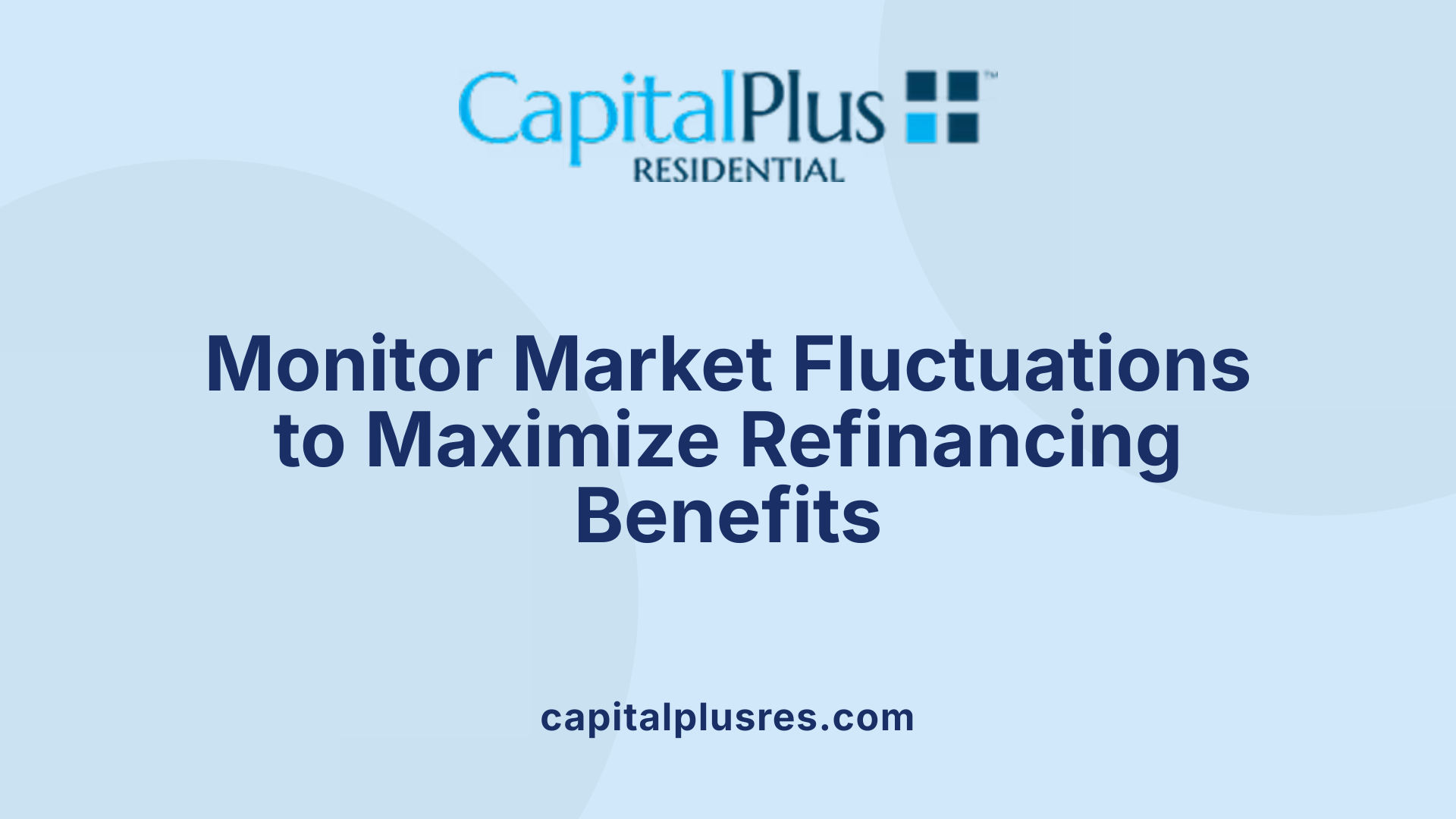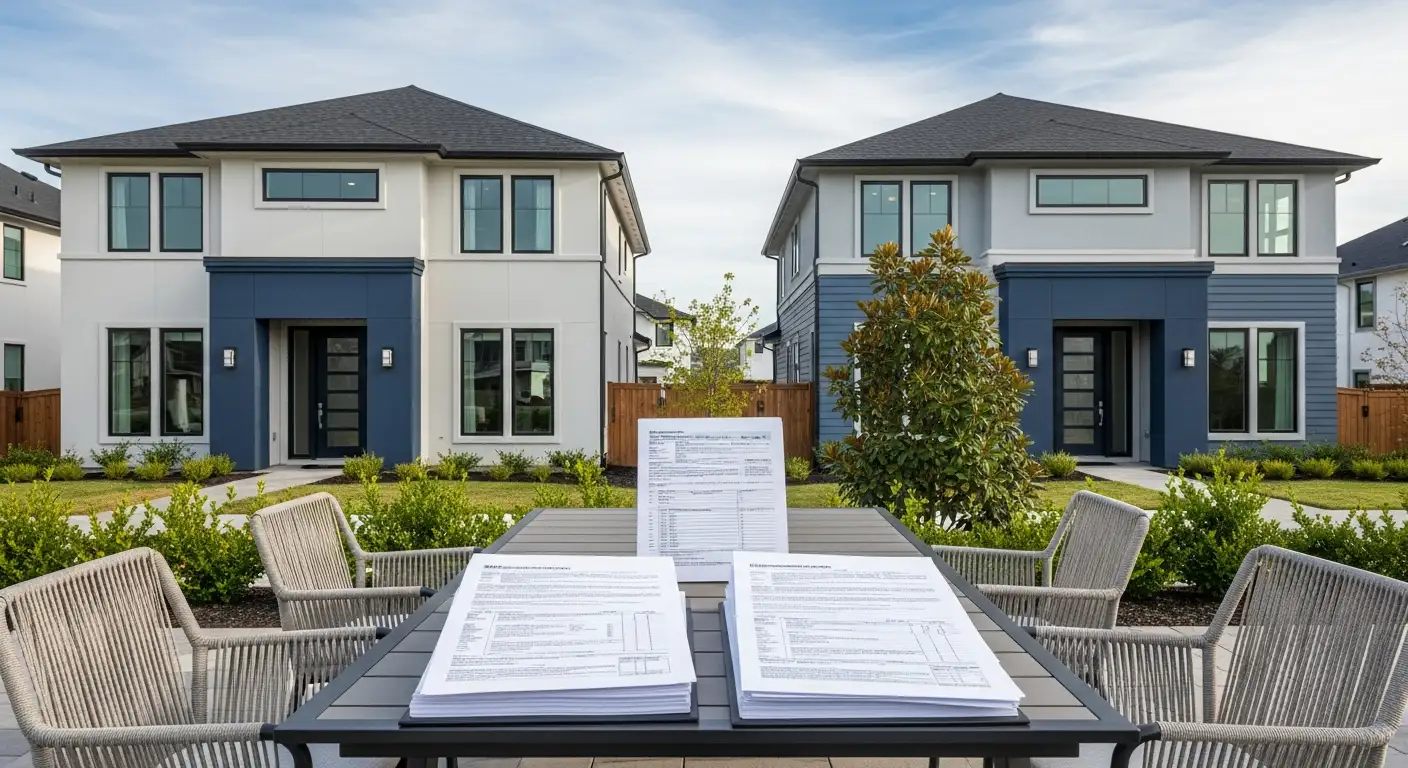Understanding the Benefits and Considerations of Refinancing
Mortgage refinancing has become an increasingly popular strategy for homeowners seeking to capitalize on falling interest rates. By replacing their existing mortgage with a new one at a lower rate, homeowners can enjoy reduced monthly payments, save on total interest, and potentially access additional funds through cash-out refinancing. However, given the costs and timing considerations involved, understanding when and how to refinance is crucial for maximizing benefits. This article explores various refinancing options, the current market conditions, and key factors homeowners should evaluate before making their move.
Refinancing Options and Processes Available to Homeowners
What are the refinancing options and processes available to homeowners looking to lower their interest rates?
Homeowners eager to reduce their mortgage interest rates have several options. The most common is a rate-and-term refinance, which involves replacing the current mortgage with a new one that has a lower interest rate. This option can decrease monthly payments and total interest over the life of the loan.
Another popular choice is cash-out refinancing. This allows homeowners to borrow against their home equity to access funds for home improvements, debt consolidation, or other expenses. Usually, this method costs less than personal loans or credit cards and provides immediate cash.
Switching from an adjustable-rate mortgage (ARM) to a fixed-rate mortgage is also a common strategy. It offers payment stability, especially when interest rates are expected to rise.
The process of refinancing typically involves several steps:
- Choosing a suitable loan type based on your financial goals.
- Comparing offers from multiple lenders through Loan Estimates.
- Gathering financial documentation such as income proofs, credit reports, and existing mortgage details.
- Locking in an interest rate to secure favorable terms.
- Undergoing an appraisal to determine property value.
- Completing underwriting to ensure creditworthiness and loan compliance.
- Finalizing the transaction with a closing, which includes signing documents and paying closing costs.
Refinancing costs generally fall between 2% and 6% of the loan amount, including fees for appraisal, application, and closing. It’s important for homeowners to calculate the break-even point—the time when savings from a lower interest rate offset initial expenses. Making well-informed decisions involves comparing different offers and understanding the full process.
To sum up, homeowner options for refinancing to lower interest rates are diverse, and following a structured process helps optimize financial benefits. Using online calculators and seeking multiple quotes are recommended steps to ensure a smart refinancing choice.
Timing and Personal Circumstances for Refinancing

When is it a good time to refinance a mortgage based on current interest rates and personal circumstances?
Refinancing becomes particularly appealing when current mortgage interest rates are lower than your existing rate, leading to potential savings on monthly payments and in total interest paid over the life of the loan. For instance, if your rate drops by at least 0.5% to 0.75% from your current rate, it often justifies considering a refinance.
Homeowners should also evaluate their own financial situation. Improvements such as increased income, a higher credit score, or increased home equity can make refinancing more beneficial and accessible. Conducting a breakeven analysis helps determine if the upfront refinancing costs—like closing fees—can be offset by the savings achieved over time.
Timing is crucial; if you plan to stay in your home long enough to recoup the costs, refinancing can be a smart move. Conversely, if you intend to sell soon or have paid off most of your mortgage, refinancing may not be worthwhile.
Market trends also influence this decision. Watching for significant drops in interest rates, typically at least half a percentage point, can indicate the right moment to refinance. Switching from an adjustable-rate mortgage (ARM) to a fixed-rate mortgage might also be advantageous if economic outlooks suggest increasing rates, providing ongoing payment stability.
Overall, the best time depends on a combination of current market conditions, personal financial stability, and long-term homeownership plans.
Market Conditions and Their Impact on Refinancing Decisions
Current mortgage rate trends
Recent data shows that mortgage interest rates have decreased significantly, creating favorable opportunities for refinancing. As of late September 2025, the average rate for a 30-year fixed mortgage is about 6.61%, down from higher rates earlier in the year. This decline benefits homeowners looking to lower their monthly payments or total interest paid.
Effects of rate fluctuations on refinancing incentives
When mortgage rates drop by about 0.5% to 0.75% from a homeowner's current rate, refinancing tends to become worthwhile. For instance, reducing a mortgage rate from 7% to 6% can save hundreds of dollars monthly—potentially around $329 for every $500,000 borrowed—and tens of thousands over the life of the loan. That said, if rates are rising or remaining steady, the motivation to refinance diminishes, especially if the costs and time to recover those expenses outweigh the benefits.
Market stability and housing demand
Market stability influences refinancing decisions as well. When housing demand is strong and home prices are stable or rising, homeowners may be more inclined to refinance or tap into their home equity through cash-out options. Conversely, volatile markets may motivate caution, since refinancing costs might not be offset by savings or increased home value.
Long-term savings considerations
For homeowners planning to stay in their home long-term, refinancing at lower rates can be a smart move. The longer the period they intend to keep their new loan, the more they can benefit from reduced interest costs. Using online calculators to estimate break-even points helps decide whether refinancing is financially sound—generally, if the total savings surpass the upfront costs within a few years, it’s a good investment.
Is refinancing currently advantageous considering market conditions?
Based on recent market data, refinancing is likely advantageous if homeowners can secure a rate at least 0.5% to 0.75% lower than their current rate. As of late September 2025, the average 30-year fixed refinance rate is around 6.61%, down from previous months, reflecting favorable market conditions for refinance opportunities. Homeowners with high-interest rates from recent years—such as 7% or more—stand to benefit significantly, particularly if they plan to stay in their home long-term. However, in an environment where rates begin to rise again, the incentive to refinance decreases, and homeowners should carefully compare potential savings against closing costs and the time needed to recoup their investment.
Benefits of Refinancing to Lower Interest Rates
 Refinancing a mortgage to secure lower interest rates offers several compelling advantages for homeowners. The primary benefit is the reduction in monthly payments. When interest rates decrease, borrowers can lower their ongoing mortgage costs, which makes monthly budgets more manageable.
Refinancing a mortgage to secure lower interest rates offers several compelling advantages for homeowners. The primary benefit is the reduction in monthly payments. When interest rates decrease, borrowers can lower their ongoing mortgage costs, which makes monthly budgets more manageable.
In addition to smaller payments, refinancing at a lower rate significantly decreases the total interest paid over the life of the loan. For example, lowering a mortgage rate from 7% to 5% can save tens of thousands of dollars in interest, particularly over a 30-year loan. Such savings can free up funds for other financial goals or expenses.
Another key advantage is the opportunity to adjust the loan's term. Some homeowners choose to switch from a 30-year to a 15-year mortgage, which enables them to pay off their home faster. This approach not only shortens the repayment period but also reduces the overall interest paid, accelerating equity accumulation.
Refinancing can also help eliminate private mortgage insurance (PMI). Homeowners whose equity surpasses 20% can often remove PMI premiums, resulting in further monthly savings. Additionally, switching from an adjustable-rate mortgage (ARM) to a fixed-rate mortgage provides payment stability, protecting against rising interest rates and ensuring consistent monthly payments.
However, it’s important to evaluate whether refinancing costs are justified by the savings. While the benefits can be substantial, the upfront expenses, including closing costs, must be offset by long-term financial gains. Careful analysis and calculations can help determine if refinancing is the right move based on individual circumstances.
In summary, refinancing to a lower interest rate can lead to lower monthly payments, significant interest savings, faster loan payoff, and simplification of loan terms—all of which contribute to improved financial stability and greater homeownership confidence.
Interest Rate Fluctuations and Refinance Decisions

How do fluctuations in interest rates impact decisions to refinance a mortgage?
Interest rate movements are a major factor in when homeowners decide to refinance. When mortgage rates fall from historic highs, such as a peak of around 7%, down to more favorable levels like 6.2%, homeowners with existing higher-rate loans often see a chance to save money.
Refinancing is most attractive when interest rates decline by at least 1% to 2%. For example, reducing a mortgage rate from 7% to 5% can significantly decrease monthly payments and long-term interest payments. These savings can justify the costs associated with refinancing, such as closing expenses, which are typically between 2% and 5% of the loan amount.
When rates are dropping, homeowners are motivated to act quickly to lock in lower rates, especially if they plan to stay in the home for several more years. The potential for long-term savings makes refinancing worthwhile during these periods. However, if interest rates begin to rise again, the incentive to refinance diminishes because future savings may not offset the costs.
Market timing is crucial. If rates are currently low but expected to rise, refinancing sooner rather than later can be advantageous. Conversely, when rates are rising or stable, it might make more sense to hold off unless there are other reasons for refinancing, such as cashing out equity or changing loan terms.
In sum, fluctuations influence not just the decision to refinance but also when to act. A significant drop in rates generally prompts homeowners to seize the opportunity, provided they will benefit over the long term.
More information
For further details on how market rate fluctuations influence mortgage refinancing decisions, searching "interest rate fluctuations mortgage refinancing" provides extensive insights and current market analysis.
Financial Impact and Potential Savings of Lower Rate Refinancing

What are the potential savings and implications of refinancing a mortgage at lower interest rates?
Refinancing at lower interest rates can significantly cut down the total amount of interest paid over the life of the loan. For homeowners, the most immediate benefit is often a decrease in monthly payments, which can free up cash flow for other expenses.
For example, if you have a $400,000 mortgage at an initial rate of 7.5%, refinancing to a 6% interest rate can save around $269 each month. These savings accumulate over time, resulting in tens of thousands of dollars saved in interest costs, especially over a 15- or 30-year period.
Refinancing options are not limited to interest rate reductions. They also enable borrowers to switch to shorter loan terms, like moving from a 30-year to a 15-year mortgage. This typically increases monthly payments but allows faster repayment and builds equity quicker.
Furthermore, lowering mortgage interest rates can help eliminate private mortgage insurance (PMI) if the home's equity surpasses 20%. This further reduces monthly costs.
However, it’s essential for homeowners to consider closing costs, which usually range from 2% to 6% of the loan amount. These costs include appraisal, application, and closing fees. To determine if refinancing is worthwhile, performing a breakeven analysis is critical. This calculation estimates how long it will take for the monthly savings to cover the upfront costs.
In summary, refinancing to a lower interest rate offers substantial financial advantages by cutting interest expenses, reducing payments, and enabling faster loan payoff, provided the homeowner carefully analyzes associated costs and benefits.
Costs, Timing, and Critical Considerations Before Refinancing

What costs, timing, and considerations should homeowners evaluate before refinancing for lower interest rates?
Refinancing can be a strategic move to reduce mortgage payments or shorten loan duration. However, it involves several important factors that homeowners must carefully evaluate.
One of the most significant considerations is the total cost of refinancing. These costs, often called closing costs, typically range from 2% to 6% of the loan amount. They include expenses such as appraisal fees, application fees, title insurance, and loan origination charges. For example, refinancing a $300,000 mortgage could cost between $6,000 and $18,000 in closing fees.
Calculating the breakeven point is crucial. This involves dividing the total refinancing costs by the expected monthly savings. If, for instance, refinancing saves $200 per month, a homeowner paying $9,000 in closing costs would need approximately 45 months (or about 3.75 years) to recover those costs. Staying in the home beyond this period makes refinancing financially worthwhile.
Homeowners should also consider how long they plan to remain in their homes. A longer expected stay increases the likelihood that the savings from lower interest rates will outweigh the initial expenses. Conversely, if a move is anticipated within a few years, refinancing may not be cost-effective.
Market conditions and lender offers play significant roles. When interest rates drop sharply—say, by about 75 basis points—refinancing often makes sense. It’s advisable to shop around for multiple quotes, as different lenders may offer varying rates and closing costs.
Some lenders provide no-closing-cost refinancing options, which can immediately reduce expenses but might include a slightly higher interest rate or rolled-in fees. Analyzing whether these options suit one's financial situation is important.
Lastly, aligning refinancing with long-term financial goals—such as paying off the mortgage faster, reducing monthly payments, or accessing home equity—ensures the decision supports overall financial health. Adequately evaluating all these aspects helps homeowners determine the right timing and approach to refinancing for lower interest rates.
Maximizing Benefits Through Strategic Refinancing
In a favorable interest rate environment, refinancing can be a powerful tool for homeowners to reduce costs, shorten loan durations, and improve financial stability. However, success depends on careful evaluation of current market conditions, individual financial circumstances, and the costs involved. By understanding the available options, timing the refinance appropriately, and performing thorough cost-benefit analyses, homeowners can make informed decisions that lead to meaningful savings and long-term financial health.
References
- Should You Refinance Your Mortgage if Interest Rates Go ...
- When to Refinance Your Mortgage
- Mortgage rates have dropped. Should you refinance your ...
- Top 5 reasons to refinance and the pros and cons of each
- Want to refinance your mortgage before the end of 2025? ...
- When Is It Worth It to Refinance Your Mortgage? | 2025
- How Lower Interest Rates Impact Your Mortgage
- The Smart Homeowner's Guide: 4 Benefits of Refinancing ...
- The benefits of refinancing your home loan
- Refinancing: What is it and how does it work?
Latest Blog


Get Pre-Approved Today
Start your secure online application now so you can get pre-approved for a mortgage (and close on your dream home) quickly within 5 minutes.









